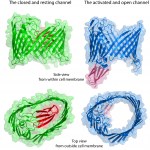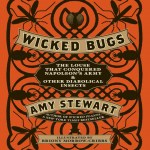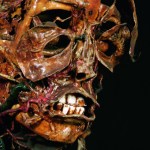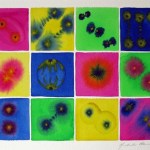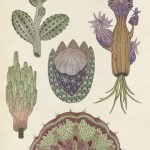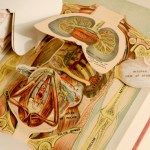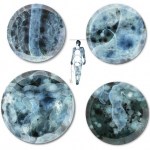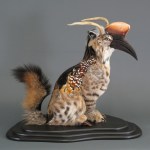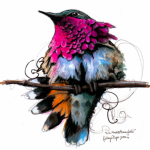biology
Remember Michael Egnor?
I bet many of you do. If you were reading this blog three or four years ago, Dr. Egnor was a fairly regular target topic of my excretions of not-so-Respectful Insolence. The reason for that was, at the time, I was quite annoyed that a fellow surgeon could so regularly lay down such incredible blasts of pseudoscientific nonsense in the defense of his "intelligent design" creationism views. Back then he did this as a semi-regular blogger for a blog that is a propaganda outlet for the crank ID propagandists at Discovery Institute in much the same way that Age of Autism is…
The Smithsonian has a cool post on wingless ants that have learned how to glide through the forest canopy using their outstretched legs. If knocked from their treetop nest, Cephalotes atratus avoid falling to the ground by steering themselves, tail first, back toward the tree. Yes, not only can these ants glide, they do it backwards.
Full details over at the Smithsonian Science blog.
If this luminous, high-definition, time-lapse film of Arctic skies and seas by Norwegian photographer TSO (Terje Sorgjerd) doesn't vaporize your stress in under three minutes, I don't know what will. Be sure to click the video controls to view full-screen - this one is worth it.
Via Andrew Sullivan.
In news that may shake the cranberry juice industry to its core, new atomic-level "snapshots" reveal how bacteria such as E. coli produce and secrete sticky appendages called pili, which help the microbes attach to and infect human bladder cells.
These crystal structures -- produced at the National Synchrotron Light Source (NSLS) at Brookhaven Lab and the European Synchrotron Radiation Facility in Grenoble, France -- unravel a complex choreography of protein-protein interactions that will aid in the design of new antibacterial drugs. Finding ways to interfere with pili formation could help…
Amy Stewart's new book Wicked Bugs: The Louse That Conquered Napoleon's Army & Other Diabolical Insects takes a fairly trivial concept - a collection of historical anecdotes and icky factoids about dangerous insects - and executes it remarkably well. The book is well-written and has a non-cloying sense of humor ("she's just not that into you," begins the section relating how female praying mantids eat the males). Briony Morrow-Cribbs lends her insect illustrations (see a NYTimes slideshow of her ink illustrations here), and Anne Winslow's design plays off the concept of a vintage…
Razib Khan has a good response to my post yesterday about biopunks, including this:
I obviously support this movement and its intents (I've met a few of the people who are prominent in it). But we need to keep perspective here. This will probably be analogous to the free or open source software movement; the base of tinkers will be much larger than corporations and academic institutions, but it isn't going to expand to cover the majority of the public. But so what? Most us can probably agree that the ad hoc decentralized elements of the software engineering community have done good just by…
On DNA Day, 23 and Me had a sale on their personal genomics service. They'd do their standard scan of your genome for free, as long as you paid for a year's worth of their online subscription service.
A much smaller version of that same genome survey would have cost you a thousand dollars or more only a couple of years ago. For your money, you get data on single nucleotide polymorphisms at about a million spots in your chromosomal and mitochondrial DNA: mutations that can tell you about your ancestors' migrations across the globe, about your propensity for certain diseases, and about…
. . . they could have. Or pretty darn close, at least - they just needed to visit one of the many European cabinets of anatomical curiosities, to see the work of anatomists like Honore Fragonard.
Fragonard's eighteenth-century ecorches were the clear precursors to Gunther von Hagens' "Body Worlds" exhibits: preserved, injected, partially dissected bodies in lifelike, dramatic poses, with ragged strips of muscle draped like primitive clothing over exposed vessels and nerves. The effect is eerie - like a Vesalius illustration sprung to (half-)life:
Man with a Mandible
Several of Fragonard's…
Cell Division IV
Michele Banks
DC area artist Michele Banks has donated one of her cell division watercolors to raise funds for art outreach. Check out the online auction - the painting is matted and framed and currently going for only $52.
Michele is not a biologist, but she's been on a sci-art kick for a while, inspired by the fortuitous resemblance of watercolor patterns to cellular structures. To see more of her work, visit her etsy shop, artologica.
minouette of magpie & whiskeyjack has posted an interesting meditation on the resemblances between Katie Scott's whimsical faux-botanical/biological atlas pages (above), the illustrations of Ernst Haeckel (whose portrait minouette just finished), and the Codex Seraphinianous. It's a harmonious grouping of artistic influences - check it out.
Animated Anatomies, a new show at the Perkins Library at Duke University, explores the tradition of fold-out or pop-up paper anatomical diagrams:
Animated Anatomies explores the visually stunning and technically complex genre of printed texts and illustrations known as anatomical flap books. These publications invite the viewer to participate in virtual autopsies, through the process of unfolding their movable leaves, simulating the act of human dissection. This exhibit traces the flap book genre beginning with early examples from the sixteenth century, to the colorful "golden age" of…
. . . let the table settings do the talking (and the grossing out) for you! These Consumption Dinnerware plates by Leah Piepgras "are a map of the digestive tract, from mouth to anus:"
I'm trying to decide if these plates have a future as a diet aid.* Visualizing the eventual chyme-ish fate of a bolus of taco salad might just induce me to eat less. . . on the other hand, the dreamy blue watercolor palette makes me think of snowflakes, not chyme and gall. And I think I've done too many dissections for a medical illustration to have much of an effect.
Via the design blog CollabCubed.
*you…
Remember Robert O. Young?
He's the purveyor of only the finest quackery. Note that, by "finest," I mean the most highly entertaining, the sort of utter twaddle that makes me laugh out loud when I read it. Whether it's his claim that alkalinization is the cure for basically all disease, his characterizing sepsis as not being due to bacterial infection, his description of cancer as a mechanism to protect the body from "rotten cells" spoiled by acid and liquified, or his nonsensical attacks on Andrew Weil (his being one of the only men who can make Weil look reasonable by comparison), Robrt O.…
Earth Spirit, 2010
Enrique Gomez de Molina
Reader Laura alerted me to this iO9 post I missed on taxidermy artist Enrique Gomez de Molina, whose work would be written off as bad Photoshopping - except it's real sculpture.
The artist says,
The impossibility of my creatures brings me both joy and sadness at the same time. The joy comes from seeing and experiencing the Fantasy of the work but that is coupled with the sadness of the fact that we are destroying all of these beautiful things.
See a video of a sculpture in progress - a rhino covered with peacock feathers and thousands of individual…
On Tetrapod Zoology, Darren Naish acquaints us with all manner of vesper bats, a group which comprises 410 of the 1110 bat species worldwide. In Part I, Darren provides an overview of the group as a whole, including their snub-nosed morphology, invertebrate eating habits, echolocation frequencies, and migratory tactics, which may have "evolved at least six times independently." In part III, he looks at a sister group to vesper bats called bent-wing bats, which "have the smallest reported genome of any mammal: it's about half average size." And in part VII, Darren explains that desert long-…
As hard as it is for me to believe sometimes, I've been at this blogging biz a long time--well over six years now. However, I've been engaged, in one form or another, in combatting pseudoscience, pseudohistory, and crankery online since the late 1990s. Although I try hard not to fall into the same cognitive traps that a certain pediatrician to the stars does, namely considering my own anecdotal experience to be superior to controlled studies, that is not to say that personal experience is without value. At least, that's what I was thinking when I came across Steve Novella's post A failure to…
Thanks moms! Slightly more than half of everything we are we owe to you. :)
Song by cadamole - late of the St. Patrick's Day song.
An absolutely beautiful hummingbird illustration by paperfashion, AKA Kathryn Elyse:
According to the etsy listing, it's pencil, ink and watercolor. That tickles me, because yes you can get those bold colors in watercolors, but few people do, and I thought it might be digital. As you can see from her etsy shop (where you can buy a print), the artist predominantly does fashion illustration -- but then, this hummingbird looks like it's wearing bird haute couture. It positively glows.
Painting by Kathryn Elyse, based on an original photo by Jose Yee. (The photo is on a velvety black field, so…
Daniel Margulies of the NeuroBureau, an open neuroscience community, shared this opportunity:
The Brain-Art Competition 2011
Submission Deadline: 11:59PM CDT, Sunday, June 5th, 2011
Award Notification: June 28th, 9PM at the Cirque du Cerveau Gala (OHBM Annual Meeting), Musée National des Beaux-Arts du Québec.
In order to recognize the beauty and creativity of artistic renderings emerging from the neuroimaging community, we are launching the first annual Brain-Art Competition. Countless hours are devoted to the creation of informative visualizations for communicating neuroscientific findings…
It's a running joke that any time some horrible person is in the news, Discovery Institute fellow David Klinghoffer is sure to pen a piece trying to link that person to the nefarious ways of evolution-defenders. He's written such pieces about Hitler, the Columbine killers, the Holocaust museum shooter, and many other modern monsters.
Today's headlines are dominated by talk of Osama bin Laden, so we get, on the DI twitter feed:
David Klinghoffer explains the connection between Osama bin Laden and "junk" DNA
And indeed, the post over at the Disco. 'Tute complaints department is titled "The…
